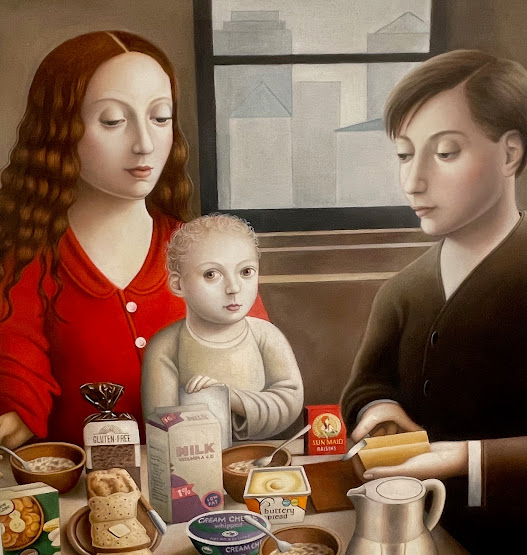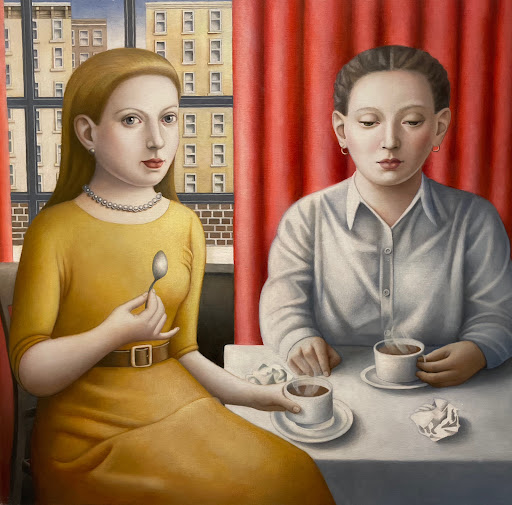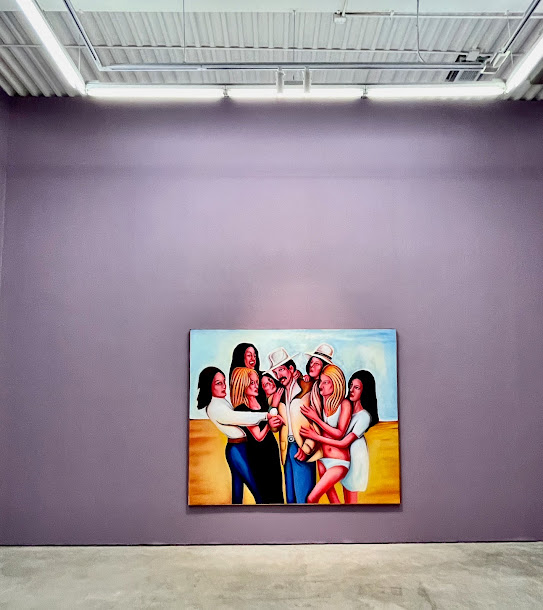(Drivebycuriosity) - 2022 did not end Covid-19 but multiple vaccinations allowed me to travel again and to visit rock concerts,
museums and art galleries. But there was still a lot of time to read and fortunately I discovered some interesting books. Here a my favorites:
"Metazoa" by Peter Godfrey-Smith was the book of the year for me. The author focuses on the question how consciousness evolved in animals. Humans inherited many items, like eyes and neurons, from common ancestors. Godfrey-Smith calls animals our cousins who "can teach us much about the evolutionary origins of not only our bodies, but also our minds." The book is based on the author`s own research & ideas, who regularly dived on the shore of Australia, but also on general knowledge from fossils enhanced with musings by other scientists and philosophers. Even animals like sponges, crabs, sharks and others seem to have some consciousness because they
respond to their environment and they react to the behavior of their
fellows, prey ( food) and enemies (predators). The behavior of all life forms gives valuable clues how our consciousness might have evolved ( amazon).
I was stunned by the novel "The Anomaly" by
French author Hervé Le Tellier. This piece of speculative fiction narrates a very freakish incident which
changed radically not only the lives of many people it also caused a
global upheaval. The
novel is partly a thriller with scifi elements (but not really based on science) enhanced with psychology,
religion, philosophy & metaphysical ideas. Lots of fun (amazon ).
Jan Swafford`s monumental biography "Mozart " describes over
about 800 pages painstakingly Mozart`s
life & his struggles with employers, competitors and his fragile
health. The book also dives into the history of Austria and neighboring
Germany, which was then a patchwork of independent countries. Swafford describes the political, economical & sociological environment and
the powers which influenced Mozart and his music and - being himself a composer - elaborates and explains the genius` operas, symphonies,
chamber works, concertos & other pieces of music (amazon).
"The Florintines: From Dante
to Galileo. The Transformation of Western Civilization" by Paul Strathern not only describes Florence´s struggles, rises & falls, the author also
narrates why & how the Italian Renaissance evolved and how the
famous Florentines influenced history. The book follows the lives of
people who had lived and worked in Florence and had not only shaped the
development of this place, but also the history of economy & culture
and so the spread of the Italian Renaissance and the advance of Western
culture. The book is lively written, full with anecdotes, and reads
almost like a novel ( amazon).
"The Money Game" by George Goodman, published under the name Adam Smith (originally published 1968), describes entertaining & humorously the philosophies
and psychological mindsets of stock market investors & speculators,
the players, and their strategies & tactics. The author also narrates the scientific theories how the stock market functions and if the market is efficient or not, spiced with a lot of amusing anecdotes. I reckon that the "Money Game" is still the best book on financial markets and a good introduction into microeconomics. Goodman spiced his works with lot of quotes by philosophers, economists, investors & gamblers. I learned many things, for instance that there is no "Wisdom of the Masses". Instead the market often proves David
Mackay´s book "Extraordinary Popular Delusions and the Madness of Crowds" (published 1841!), describing herding behavior and bubbles, panics & crashes ( amazon) .
Ayn Rand`s novel "Fountainhead" (first published
1943) is still important. It seems that Rand described today´s Woke sentiment and the world of Elizabeth
Warren, Bernie Sanders & the Biden administration ( amazon).
"The Professor And The Madman" about the making of the gargantuan Oxford
English Dictionary by Simon
Winchester, melted the about 70 years
lasting development of the monstrous publication with the biographies of
2 men: James Murray, the creator, organizer and main editor of the OED,
the "Professor", and the American W. C. Minor, one of his most
important supporting writers, the "Madman". The
book is written like a novel. Winchester tells how Murray mastered his
gargantuan task, how the "mad man" became the "mad man" and how creating
the OED shaped their different lives. "The Professor and .." touches a
great variety of topics: linguistics, book printing, organization,
American civil war, mental illness, murder and many more. I learned a lot reading this book and I
had fun as well (amazon ).
I like sushi & sashimi. "Oishii: The History of Sushi" by Eric C. Rath describes how the preparation of these delicacies evolved in China & Japan and the chemistry which makes uncooked fish edible ( amazon).
"The
Antitrust Religion" by Edwin S. Rockefeller, published in 2007, gives a
sharp, analytical and sometimes humorous overview of America´s
antitrust history and describes "how blind
faith in antitrust has led to confusing and arbitrary enforcement". Rockefeller calls antitrust "a religious faith" and "an
intuitive mix of law, economics, and politics; a mystical collection of
aspirations, beliefs, suspicions, presumptions, and predictions" ( amazon).
"Tamburlaine must Die", by Louise Welsh tells the last - very dark - days of Christopher Marlow who was a poet, playwright and colleague of Shakespeare. He became popular with his play "Tamburlaine", wrote an early version of "Faust" and other pieces. Marlow might have become as famous as his competitor, but his life ended early under unknown circumstances.We learn about Marlow`s relationship with his patron Lord Walsingham, Queen Elizabeth`spymaster, his friends & foes, his ambitions and a lot about his fears. Welsh wrote in a poetic style inspired by Marlow`s writings and created a menacing atmosphere. Even the very explicit and elaborately described sex scenes read like poems. The novel is a travel back into very sinister and dangerous times ( amazon).
Martin
Cruz Smith`s novel "Havana Bay", set in Cuba, covers post cold war politics, conspiracies and the beauty, but also
the decay of Havana. Cruz Smith
mixes the fragile relationship between Cuba & Russia after the fall
of the Soviet Union, Voodoo & African cults, prostitution,
espionage, tropical fishing and many more items into a intoxicating and
delicious tropical cocktail. The novel
starts with grizzly details, lovingly served, followed by lots of
thrilling violent action scenes & surprises, set in a lush exotic
environment mixed with steamy sex and funny episodes. I
indulged into Smith`s elaborately designed action scenes, his cynical
humor, political insights and descriptions of Havana`s tropical charm. A
masterpiece (amazon ).
Lawrence Osborne`s novel "On Java Road"
is mostly set in contemporary Hong Kong, told in first person by a
tabloid journalist, an expat from England. The narrator is friend to a
crazy rich Asian playboy. Both are somewhat related with a young woman,
born into a very wealthy local family. The woman had become a radical
activist and a leader in the violent protests against the takeover by
the Communist Chinese government. The novel reminds me bit of Every Waugh´s "Brideshead Revisited". I enjoyed Osborne´s elegant & analytical style. He has the
talent to create a very dense atmosphere and transport his readers to
almost mystical places. His descriptions of Hong Kong`s culture,
geography, architecture, weather and people - spiced with a bit
philosophy - are pure pleasure to read ( amazon).
"The Rabbit Factor" by Antti Tuomainen, told in first person and set in Finland, is about a man
who`s world is set upside down and has to adapt to a totally new life.
The protagonist, who himself is a very rational analytical thinker, is suddenly confrotned with irrationality, menace & violence.
But the novel is also about learning and to grow with one`s challenges.
"What doesn`t kill us, will make us stronger", said Nietsche. The book
deals also with issues like economics, management & labor relations. The
"Rabbit Factor is spiced with a very black humor and hilarious ideas.
There are elaborately described action & steamy explicit sex scenes
and there is some romance. "The Rabbit Factor" is a very optimist & positive book - and entertaining as well ( amazon).
The novel
"Broken Summer" by Korean bestseller author J. M. Lee circles
around a murder case, it jumps back and forth in time and changes
sometimes the protagonist. The style reminds me a bit of young adult
books, especially Brothers Grimm`s gritty fairy tales, but there are a
lot adult issues like murder, alcoholism, deceit, domestic abuse, coming
of age, revenge, dysfunctional families and more. I
love how the author described the artistic development of the main
protagonist; how he advanced as an artist, how he learned painting
techniques and how he found his own very special style. I also like the
description of the protagonist´s creations and the portrayal of the
economics & politics of the art market ( amazon).
As usual I read a lot science fiction:
James L. Cambias novel "A Darkling Sea" is set on a fictional moon of a distant planet. This moon is - like Jupiter`s moon Europa - covered by a some miles deep ocean under a deep layer of ice. On the ground are - like on the bottom of earth`s oceans - volcanic springs, called vents which feed warm water, sulfur and chemicals into the ocean. These vents allowed the evolution of an intelligent life form, who settles around these springs on the bottom of the ocean. The plot follows three groups: The natives of the moon, huge lobster like intelligent beings, who are living on the ocean ground; humans who have a submarine station near the ocean bottom and explore the behavior of the natives; and space faring highly developed aliens, who distrustful observe the humans. There area lot of conflicts which lead to dramatic consequences. Parts of the book are like classic space adventures and space operas, humorous & thrilling. But Cambias also dives deep into the evolution, sociology, psychology & economy of the natives and the complex relations between humans and the more technological advanced aliens (amazon ).
Alastair Reynolds` novel` Eversion" is told in first person and begins in the early 19th century.
The protagonist works as a surgeon on a fifth class ship traveling
north along the coast of Norway. But there are many radical changes. In
the begin the novel reads like written by Jack London but turns into
cutting edge hard science fiction with elements of horror, as typical
for Reynold`s tales. And the ending is a marvel. I
enjoyed how the plot developed, a elaborate mixture of classical
adventure story and space opera with lots of philosophical musings &
a shot of romance (amazon ).
Gregory Benford´s novel "Shadows of Eternity", is set on the moon, some centuries in the future. The humans had received, collected & researched myriads of
messages from alien cultures, many light years away and maybe are
already extinct. The exterrestrial messages are collected in
a huge SETI library on the moon. The plot follows Rachel, a young
aspiring librarian @ SETI, who is tasked to analyze some of the alien
messages. What will she discover? The
alien messages are advanced software programs, a kind of artificial
intelligence. These programs are aware of themselves and see themselves
as the servants of their senders and they are able to communicate with librarians like Rachel. Benford spiced his novel with a lot of science and interwove
cosmology, evolution, biology & sociology into an interesting plot,
a melange of space opera and exotic adventure tale ( amazon).
Cixin
Liu`s anthology "To Hold up the Sky" collects 11 short stories.
The compilation shows the bandwidth of his talents & interests, but
also his writing skills. The stories - most are written decades ago -
are mostly hard science fiction, based on physics, cosmology and other
sciences. The stories also "have a strong Chinese flavor, imbued with
the culture, history, and present reality of China". Cixin Liu tried to
imagine "the direct, tangible relationship between people and the
universe". "To hold up" is cutting edge science fiction, entertaining with a lot of food for thoughts ( amazon).
The novel "Machinehood" by S.B. Divya is set around the year 2090.
Most jobs are done by AIs and other machines and humans take advanced
drugs and get micro-machines (pills) implanted to be able to compete
with the superior machines. The
complex plot has interesting & plausible ideas about the future
labor market, how corporations & social networks might have
developed and how humans and robots could cooperate & compete. The
novel shows strong philosophical tendencies and Buddhist influences. I
also enjoyed the frequently mentioning of cooking & Asian food.
Apparently the author, who holds degrees in computational neuroscience
and signal processing, is also a cook & and a foodie ( amazon).
Stanislaw
Lem`s novel "The
Invincible", first published in the year 1964, follows the crew of space cruiser "The Invincibel" who lands on a remote planet to find out what happened with a similar space ship which got lost
on this planet. The plot begins like a traditional scifi adventure and
space opera but the plot turns fast into a complex and philosophical
work, typical for Lem. The
reader gets a lot of action, technology, cosmology, & alien
settings. But Lem gives the reader much more. He presents an almost
academic description of evolution, but not the evolution we know on
earth which lead to plants, animals & humans. Lem describes a very
different - but equally plausible - development.
What
the book makes outstanding is the pivotal role of information (or data)
for the plot. This book made me aware how important information is for
our live and almost everything. Lem also introduced nanotechnology into
the genre. The Invincible shows how visionary Lem really was, maybe even more than Heinlein, Clark & Asimov ( amazon).
















































